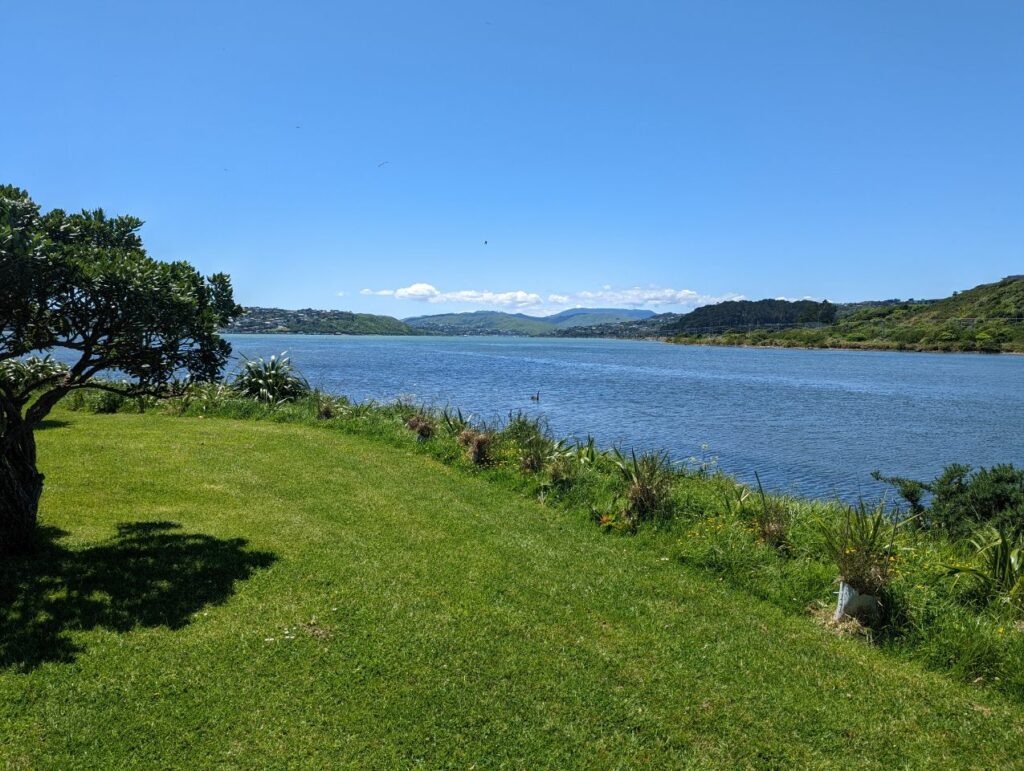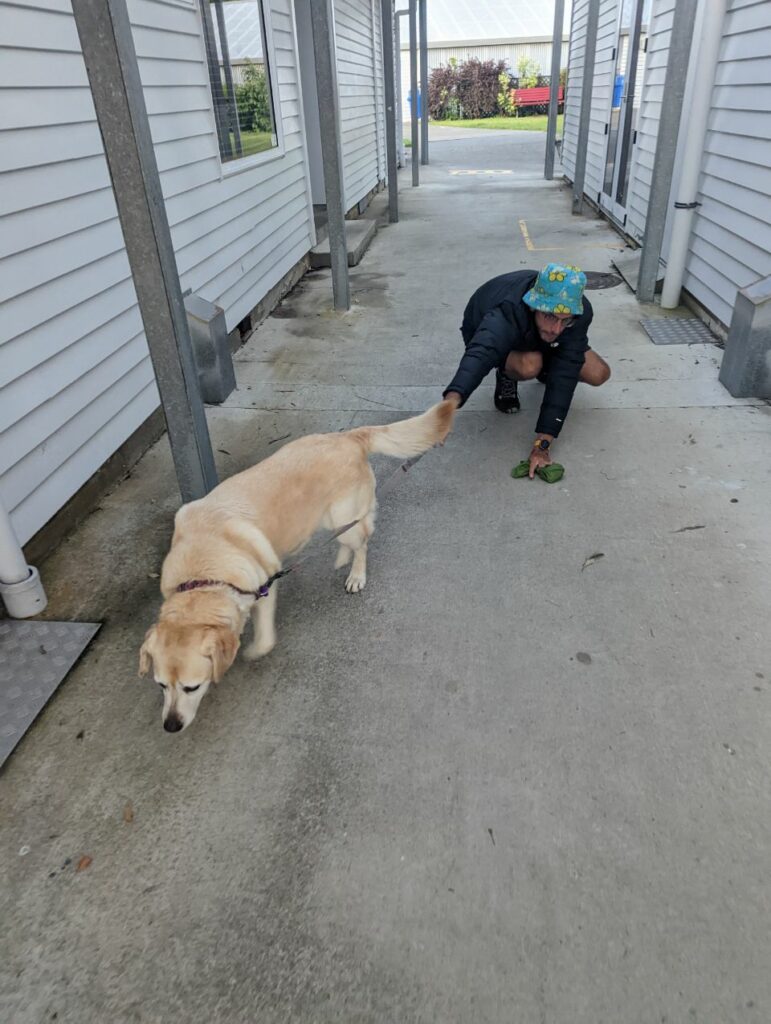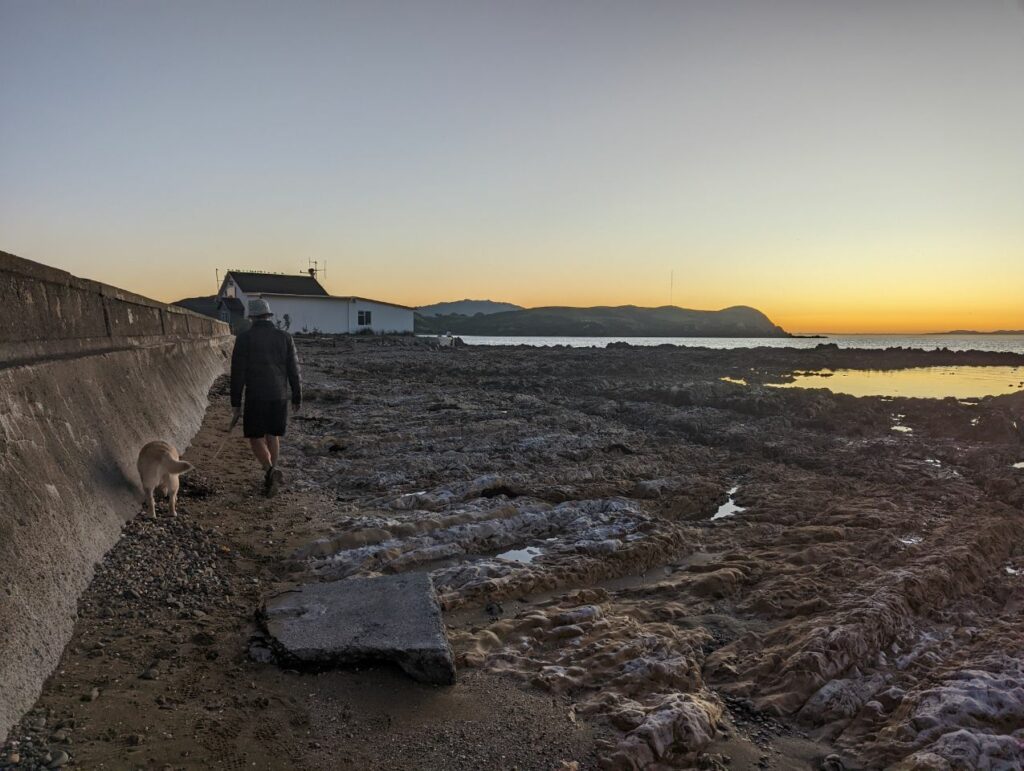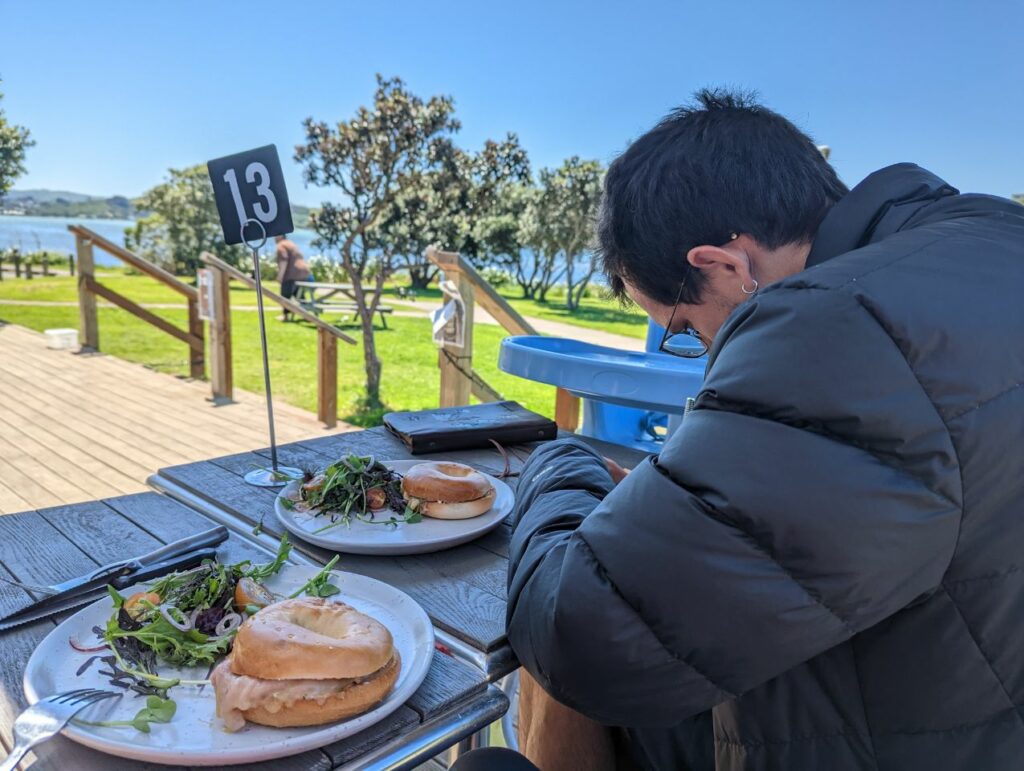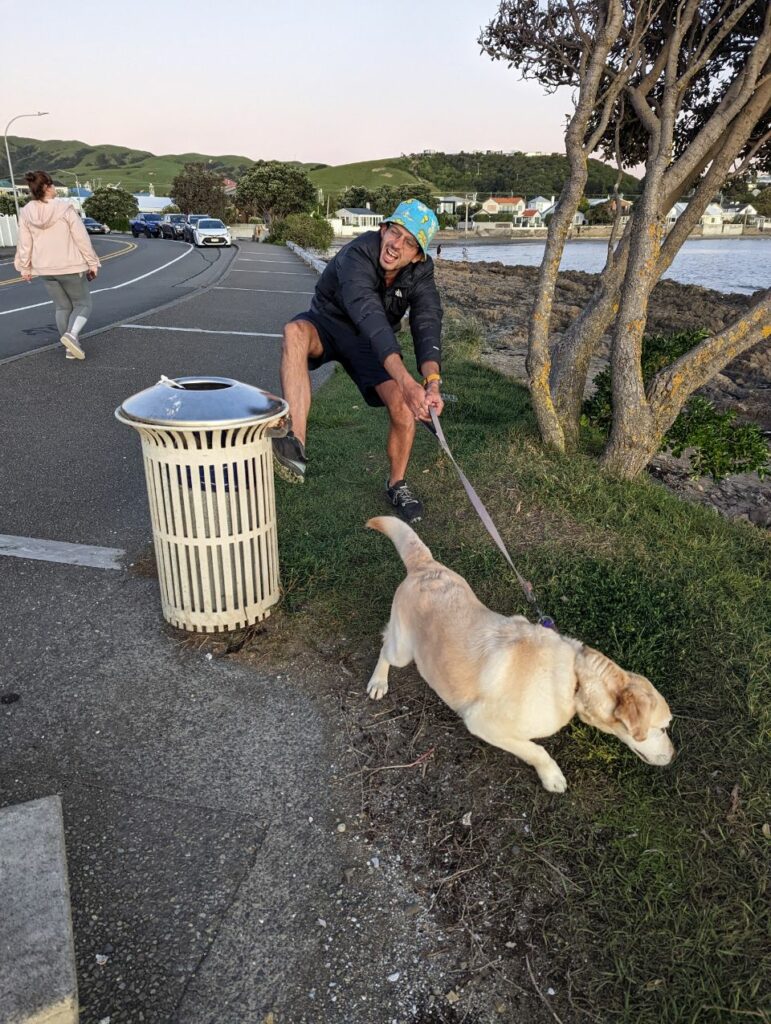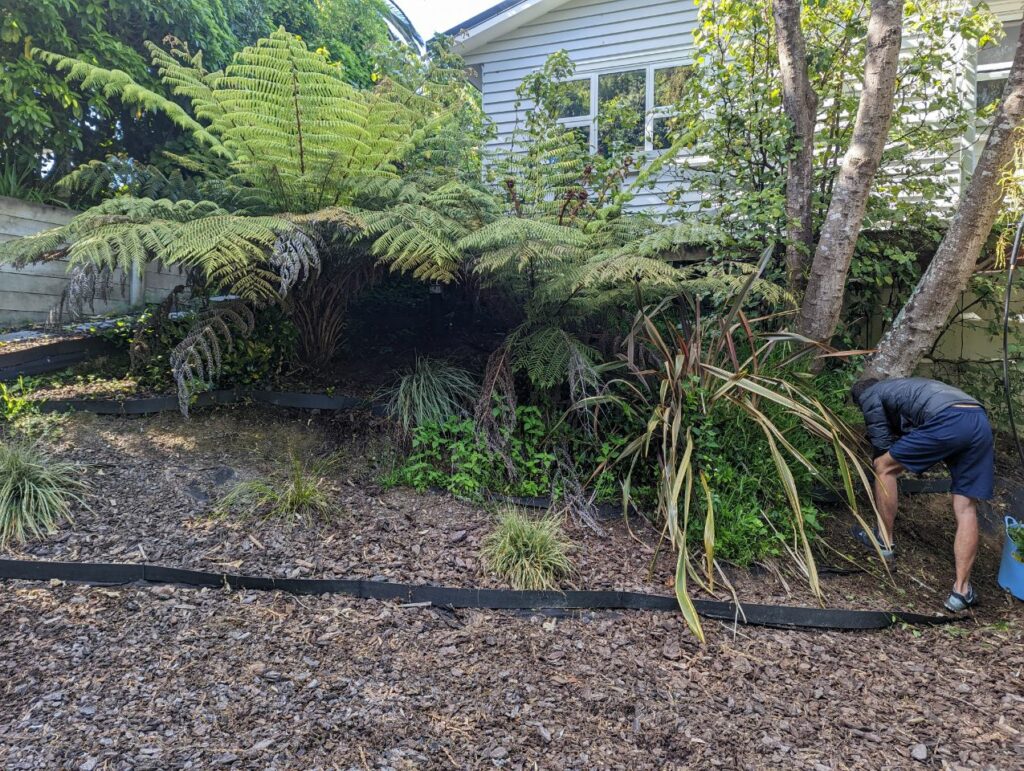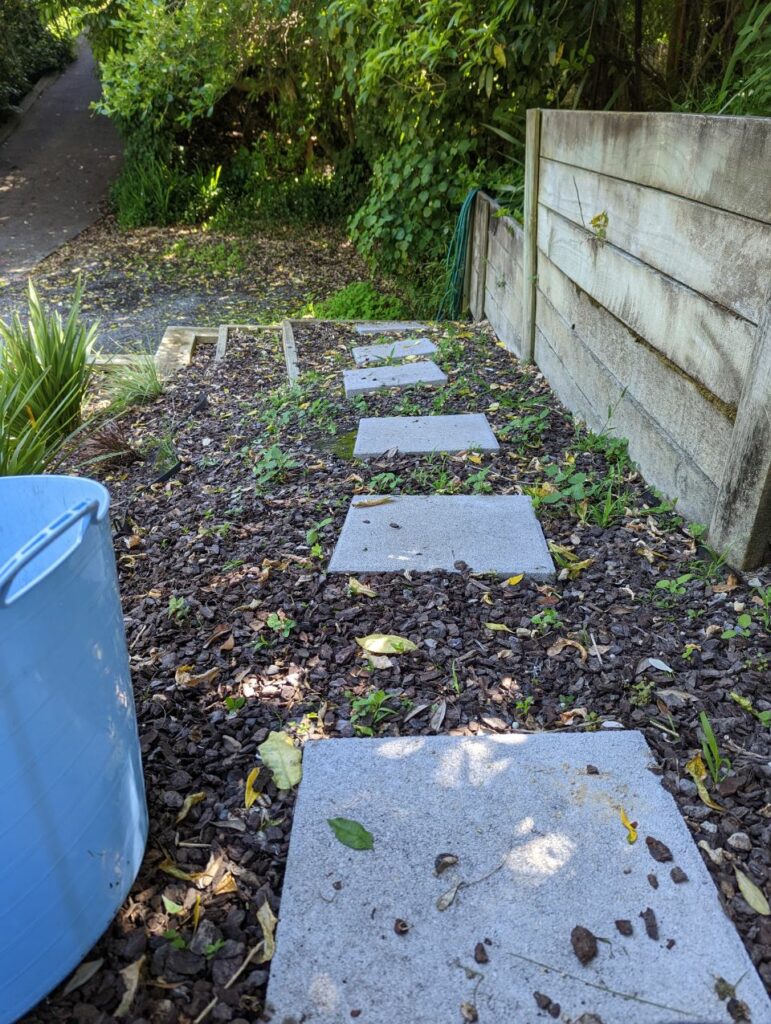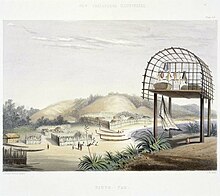Journée désherbage du jardin
Petite pause le.midi a Pororua en attendant que la roue de Martin soit réparée
Et pour finir la journée une ballade avec le chien et un beau coucher de soleil
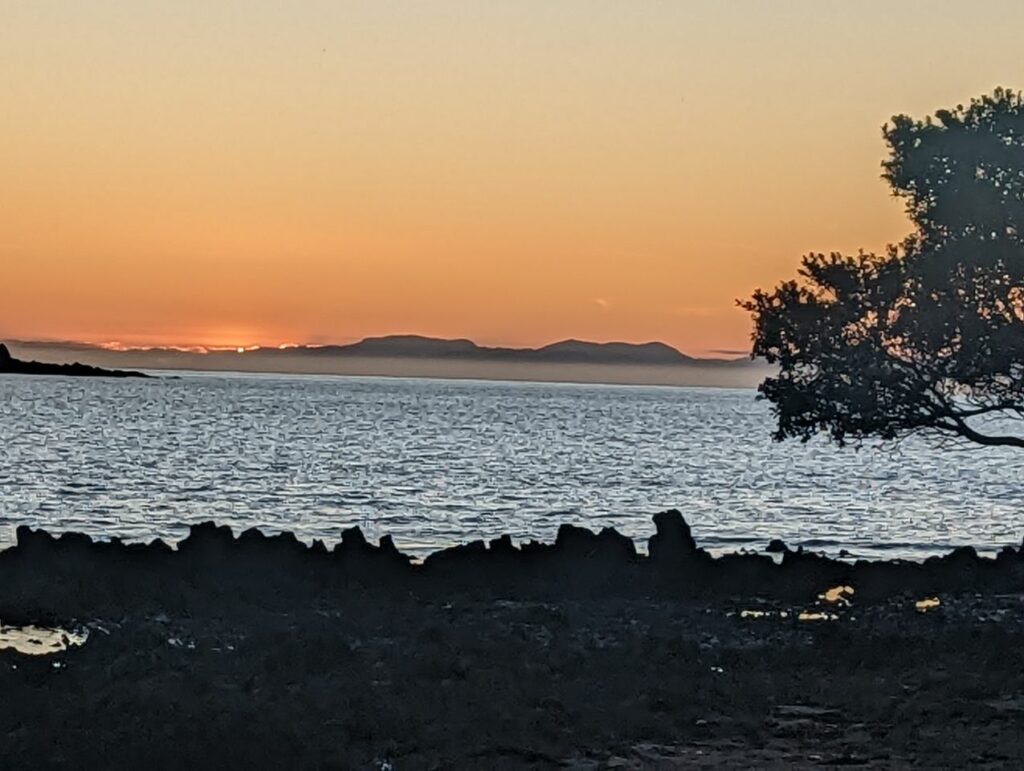
PLIMERTON
14th November 2022
The suburb of Plimmerton lies in the northwest part of the city of Porirua in New Zealand, adjacent to some of the city’s more congenial beaches. State Highway 59 and the North Island Main Trunk railway line pass just east of the main shopping and residential area.
Plimmerton has its modern origins as a late 19th century seaside resort. It is named after John Plimmer, an English settler and entrepreneur who, through the Wellington and Manawatu Railway Company, helped to fund and direct construction of the railway line. The estimated population is 2,180 as of June 2022.[1]
History
The area was first settled by the Māori people early in their occupation of New Zealand. Ngāi Tara and then Ngāti Ira settled south of Kapiti, and a number of other tribes may have lived in the area including Muaūpoko, Ngāti Apa, Ngāti Kahungunu and Ngāti Hotu.[2]
Ngāti Toa people took control of the Porirua coast in the 1820s.[3] In the 1840s the area where Plimmerton is situated was the home of Te Rauparaha, who had his main residence at Taupō pā. Te Rauparaha was captured by 200 British troops and police on 23 July 1846 near the southern end of Motuhara Road. A tiny historic reserve contains a cabbage tree that may be descended from the one he was said to have been captured near, and a plaque. In 1847, most of Ngāti Toa’s land in Porirua was sold to the Crown for the New Zealand Company by a group of eight chiefs, and Taupō was retained as part of a Māori reserve (one of three) that extended from Paremata to Paekākāriki.[4] However, the following year Te Rauparaha was released and retired to Ōtaki; by 1850 Taupō pā was deserted.[5][6]
The area continued to be referred to as Taupō, after the pā, and was leased by Ngāti Toa for farming by European settlers over the following decades. These included William Cooper, Canington (possible Carrington), and then Levi Tandy (from 1859).[2] James Walker farmed from Paremata to Plimmerton beginning in 1875.[7]
In the late 19th Century Ngāti Toa’s land holdings around Taupō began to rapidly decline as land was by converted to individual title by the Native Land Court and then sold, transferred to the Public Trustee or taken for public works and reserves.[4]
When the Horokiwi Valley Road was opened fewer travellers followed the Taua Tapu track through Taupō to Pukerua Bay. So Pauatahanui grew at the expense of Taupō until the railway line was opened in 1885.[8]
In the 1880s the Wellington and Manawatu Railway Company decided to build a railway link from the capital, Wellington, to Longburn, near Palmerston North. Several towns, including Plimmerton, were established along the way to encourage settlements that would contribute to the line’s business. John Plimmer, after whom Plimmerton was named, was a director of the company.
In 1885 the first excursion train journeyed from Wellington to Plimmerton on 3 September, and regular services began from 10 October. With the railway’s arrival, Plimmerton became accessible to holidaymakers, and evolved into a seaside resort. Plimmerton House, a two-storied hotel, was built alongside the railway station in 1886 (and burnt down in 1907). Sections began to be sold in 1888 and by the late 1890s Plimmerton had become a popular holiday destination. In 1900 Plimmerton consisted of 30 summer cottages, two private hotels and one general store.[2]
Plimmerton was originally part of Hutt County. On 1 April 1973 the still-growing area became one of the northern suburbs of Porirua. Though small, it was one of the most lively. For a time it had the only active Residents’ Association in the city.
The main state highway route through Plimmerton, previously part of SH 1, was renumbered SH 59 on 7 December 2021 due to SH 1 being shifted to the Transmission Gully Motorway.[9]
Official name
The name Plimmerton was used in promoting the railway[10] and advertising of sections for sale from the mid-1880s.[2]
Plimmerton was gazetted as an official geographic name on 3 November 2011. The suburb amalgamated the previous recorded suburb names of Plimmerton and Karehana Bay.[11] It excludes the largely Māori (Ngāti Toa) settlement of Hongoeka to the west, which was gazetted on 16 December 2010.[12]

